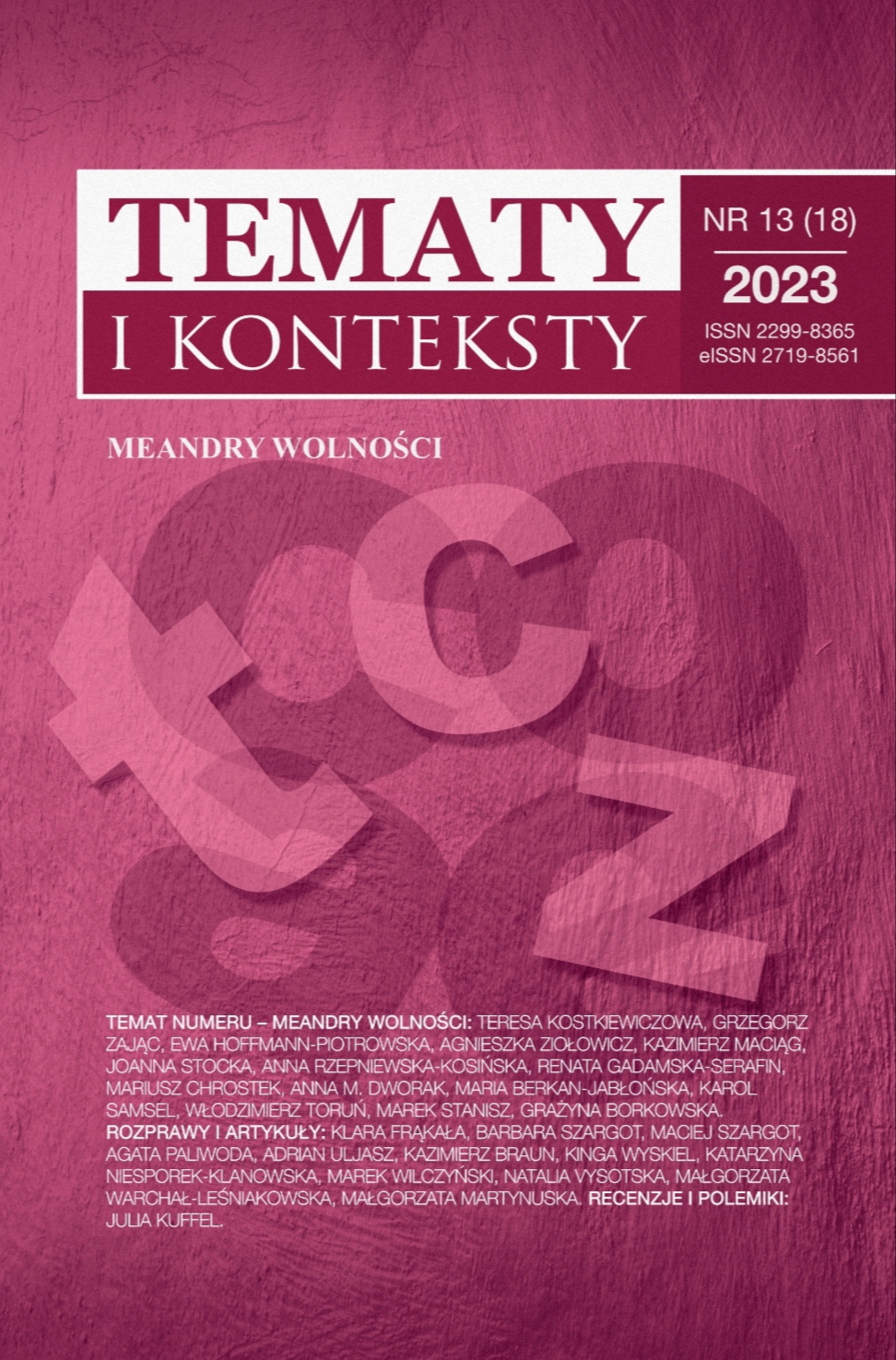"Pembroke": scenariusz dekadencji
DOI:
https://doi.org/10.15584/tik.2023.23Słowa kluczowe:
Nowa Anglia, kryzys, system symboliczny, "Pembroke", dziedzictwo purytańskieAbstrakt
Artykuł dotyczy powieści Mary E. Wilkins Freeman Pembroke (1894). Powieść jest interpretowana w kontekście wielopłaszczyznowego kryzysu Nowej Anglii po wojnie secesyjnej, obejmującego nie tylko demografię (straty wojenne w populacji męskiej) czy gospodarkę (bankructwo fabryk tekstylnych w regionie, przejęcie handlu morskiego przez Nowy Jork), lecz także kultury opartej na tradycji purytanskiej sięgającej XVII wieku. Autorka umieściła wprawdzie akcję w latach 1830-tych, jednak zarówno data publikacji książki, jak i realia miasteczka na nowoangielskiej prowincji wskazują na okres znacznie późniejszy. Wilkins Freeman kontynuuje w Pembroke realistyczną konwencję przedstawieniową tzw. "powieści domowej", sięgającą roku 1822, łącząc ją zarazem z elementami gotyckimi bliskimi romantycznej prozie Nathaniela Hawthorne'a. Konkluzja opiera się na rozumieniu kultury przez Jacquesa Lacana (Realne - Wyobrażeniowe - Symboliczne). Porządek symboliczny ufundowany na patriarchalnie zdefiniowanym "Imieniu Ojca" ulega w Pembroke rozpadowi poprzez regresję do wyobrażeniowej relacji dziecka z matką, kwestionujacej tradycyjną pozycję ojca. Innym kluczowym symptomem upadku spuścizny purytańskiej jest utrata zdolności komunikowania się przez postaci męskie i kobiece, co stawia pod znakiem zapytania przyszłość wspólnoty.
Downloads
Bibliografia
Aaron Daniel, The Unwritten War: American Writers and the Civil War. New York: Knopf, 1973.
Church Joseph, Transcendent Daughters in Jewett’s Country of the Pointed Firs. London and Toronto: Associated University Presses, 1994.
Idol Jr. John L. and Melinda M. Ponder, eds. Hawthorne and Women. Engendering and Expanding the Hawthorne Tradition. Amherst: University of Massachusetts Press, 1999.
Wilkins Freeman Mary E., Collected Ghost Stories. Arkham House: Sauk City, 1974.
Wilkins Freeman, Mary E., Pembroke, ed. Perry D. Westbrook. New Haven: College and University Press, 1971.
Westbrook, Perry D., The New England Town in Fact and Fiction. East Brunswick, NJ: Associated University Presses, 1982.
Pobrania
Opublikowane
Jak cytować
Numer
Dział
Kategorie
Licencja
Prawa autorskie (c) 2023 Tematy i Konteksty

Utwór dostępny jest na licencji Creative Commons Uznanie autorstwa – Użycie niekomercyjne – Bez utworów zależnych 4.0 Międzynarodowe.




